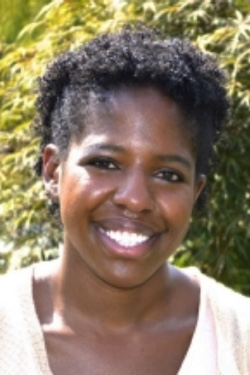 A few weeks ago I watched a fictional video tease called “The Legend of Human Black Guy.” The narrator says, “Legend has it that even when you looked at him you couldn’t see him.”
A few weeks ago I watched a fictional video tease called “The Legend of Human Black Guy.” The narrator says, “Legend has it that even when you looked at him you couldn’t see him.”
A black man walks down the hallway of an apartment building. He is on his phone talking to his mother about buying flowers for his grandmother. He sees a neighbor, a white woman, and smiles and waves at her.
The video then switches to the perspective of his neighbor, who sees him not as a caring son, a doting grandson or a cordial black man but as a black man who is disrespectful, carrying a cigar behind his ear, and a potential criminal.
He asks his neighbor whether she still bowls on Thursday nights. She warns him that she has three heavy-duty locks to secure her apartment. She then sneers and hurriedly brushes by him, marching down the hallway.
He looks stunned and tells his mom he wanted to ask about joining the neighbor’s bowling league but she’s “wildin,’” or being extreme.
What just happened here? At the most benign level, this was a simple misunderstanding.
This video is a classic example of a racial microaggression. Racial microaggressions refer to subtle expressions of hostility, and negative or insulting stereotypes toward people of visible racial and ethnic groups.
Microaggressions are ordinary and not as easy to pinpoint as more traditional forms of racial discrimination, such as when people of color were required to use separate public bathrooms and water fountains.
The white neighbor in the video did not explicitly call the black male a thief but her behaviors — a sneer, side-eye glances and getting in his face, along with a terse statement about her apartment’s security — convey these beliefs.
This type of microaggression is called an assumption of criminality. It’s founded on the belief that certain groups of people are bad and dangerous by nature. In fact, all racial microaggressions are based on old-fashioned racism passed down through generations but presented in a more subtle way.
There is nothing benign about microaggressions. They lead to mistreating people of color: harassing them, meting out harsher legal or academic punishment, discouraging them from taking certain classes or acting hostile in classrooms, malls or predominantly white neighborhoods.
This is unfair. White peers are not treated the same way as people of color. For instance, it’s been shown that when a white child is disobedient, it’s seen as innocent revelry. Adults have the attitude “boys will be boys.”
However, when children of color are disobedient they are seen as willfully disregarding an adult. It is not seen as normal boundary testing or being driven by the laughter of their friends.
Such judgments contribute to educators singling out students of color for harsher discipline. It is believed that the pipeline to prison begins in early childhood education settings, where even pre-K-aged children of color are disciplined more harshly compared to their white peers. There are few things as heartbreaking as the thought of a kindergartener being pigeonholed as aggressive, and the gradual loss of innocence that results from everyday microaggressions.
The assumption of criminality is a dangerous microaggression with long-lasting effects on the personal development, academic experience and social climate of youth of color.
We tend to internalize messages about our identity (race, gender, sexual orientation), which affects development of our self-image, confidence and overall personhood.
I encourage parents and caregivers to talk to youth of color about their experiences with microaggressions, help them better understand various forms of discrimination and consider constructive responses to microaggressions. Offer support to youth and think about other ways you as the adult can advocate for them.
Dr. Chantea Williams is a postdoctoral fellow at the Highland Psych Collaborative in Atlanta. Follow her at @DrChantea.



























